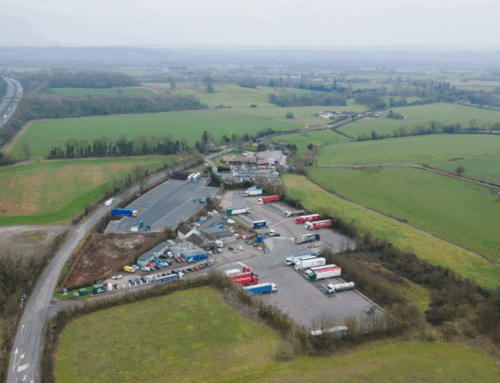Knowles Fleet is an independent fleet management company that specialises in the administration of employee car schemes and commercial vehicles across the private and public sector, including the Crown Commercial Service (CCS). Commercial director Dan O’Neill shares his expertise in how fleets can reduce their risk, costs and emissions across their entire fleet portfolio.
Employers have a duty of care
Knowles was introduced to Driving for Better Business through its work for the CCS, and is now in the process of using DfBB resources to refresh the driver packs which go to every customer.
“Employers have a duty of care towards employees and the public to ensure that all vehicles are safely operated, legally compliant and roadworthy,” says Dan. “Companies should plan their fleet renewals in terms of moving towards safer, greener and newer vehicles.”
This starts with collating global data for all the vehicles associated with the business, including owned and leased assets and grey fleet. A catalogue of all vehicles can then reveal important insights such as average age, mileage and emissions levels.
Dan says the average age of an employee owned car used for work is 7.69 years. What’s more, says Dan, grey fleet vehicles tend to do lower mileages (less than 2,000 miles pa) yet often have the highest emissions levels. “We regularly find the highest proportion of diesel cars, and of older cars, are in the grey fleet,” he says.
This shows the significant potential for organisations to target their grey fleets to reduce emissions and improve safety. “Once you have benchmark fleet data, you can implement strategies to bring down the age of those vehicles,” he says.
Grey Fleet – employees that drive their own cars
Newer vehicles are equipped with the latest driver assistance aids and safety designs, and crucially have lower emissions.
Knowles currently manages 25,000 vehicles including cars, commercial vehicles and motorbikes and offers complete management services for both company-owned, leased and grey fleet assets. Circa 7,000 of the vehicles it manages are grey fleet, which requires specific attention.
“Employers should ensure that they have a system for checking all driver licence qualifications, endorsements, and medical notifications. Grey fleet vehicles must have relevant tax and MOT certificates and be insured for business use. This data should be reviewed as often as possible – we check client data daily to give instant warning of lapses,” says Dan.
Grey fleet – the employer’s responsibility
Grey fleet vehicles can seem relatively invisible to fleet managers, but the company still has a legal responsibility to make sure they are safe and compliant if engaged on company business.
Dan warns that it can be easy for sustainability teams to ignore grey fleet vehicles because they are employee owned and seemingly out of their control. But fleet managers still have legal responsibilities to manage risk and protect drivers. Companies can minimise grey fleet use, and lower their associated emissions and risk, by investing in lower emission pool cars for business use, or using their power of procurement to offer employees new, best-value leased vehicles through a car benefit scheme.
Employees should also fit dash cams to all vehicles. “There is evidence that people drive more carefully when there is a dash-cam in the vehicle,” says Dan. “These can easily be fitted to leased or owned assets, and employers can choose to incentivise take up by setting higher insurance premiums for any employee that does not accept a dash cam on their lease scheme car.”
Dan concludes that while all companies must ensure proper fleet governance, it can be easier to achieve this with a third-party management company, especially for large fleets. Such companies can also leverage their knowledge of the market to find the best pricing.
Fleet Management top tips from Knowles
- Compile a complete register of all vehicles used for work.
- Check all compliance documentation regularly.
- Make sure all company owned and lease vehicles are inspected pre-use and periodically by managers.
- Pool cars should be booked by name and images taken before and after use for accurate damage reporting.
- Look into options to renew or replace grey fleet (as well as older company assets) such as pool cars and employee car benefit schemes to drive down emissions and improve safety.
- Fit dash-cams to all vehicles.
The views expressed in our articles are those of the featured organisation and do not necessarily reflect or represent those of the Driving for Better Business Programme.






